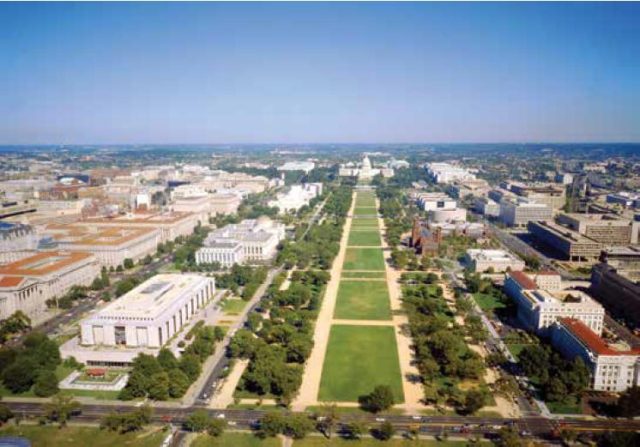The Mid-Atlantic Region
Exploring the Mid-Atlantic Region As you recall from my last message, Admiral, we were excited because we were on our way from New England to New York City. New York City is in the Mid-Atlantic region of the United States. This region is located near the middle of the Atlantic coastline. It includes five states—New York, New Jersey, Pennsylvania, Delaware, Maryland— and the city of Washington, D.C., which is the capital of the United States.
New York City, as you may recall, is the most populated city in America and one of the most populated cities on Earth. It is made up of five areas called boroughs—Manhattan, the Bronx, Brooklyn, Queens, and Staten Island. Manhattan is the most densely populated borough.
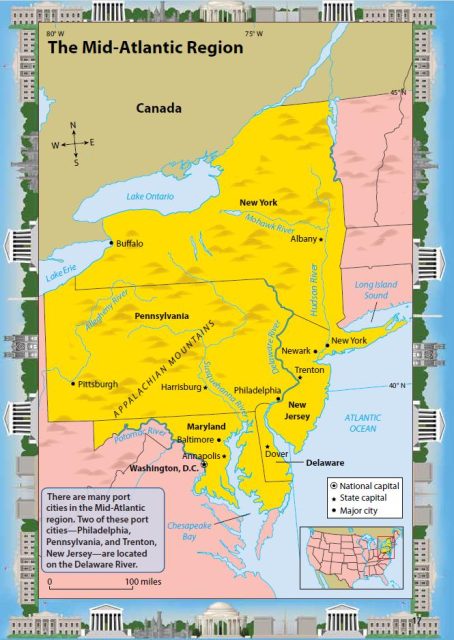
Well, the first thing we noticed were the extremely tall buildings, or skyscrapers, in Manhattan. There are so many skyscrapers packed so closely together that when you walk between them, you can hardly see the sky itself.
New York City is very, very crowded. Many people come to visit and to live in this famous city. Most of the time the sidewalks are packed with people, and the streets are packed with cars. Everyone seems to be in a hurry.
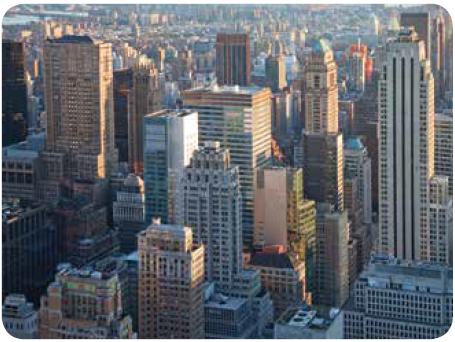
A large wave of people came to live in New York City in the 1800s. These immigrants came from countries all around the world. Many moved to New York City because they were looking for a better way of life. You see, Admiral, the United States is a country of immigrants. Since the country’s beginning, people have come from faraway places to make their homes in America.
For many immigrants, the first thing they saw when they sailed into New York Harbor was a gigantic metal statue called the Statue of Liberty. This statue is in the shape of a woman holding up a torch. It is supposed to stand for the freedom that Americans enjoy. We took a ferryboat out to the statue and discovered that you can walk up inside it. By the time we got to the top of the 354 steps, we were exhausted!
Things to Do in New York City
When immigrants moved to New York City, they brought along the different kinds of food they ate back home. That means you can get almost any kind of Earth food imaginable when visiting the city.
The crew enjoyed sampling many of these different dishes. In the area called Chinatown, we ate several of the crispy snacks called egg rolls. In Little Italy, we picked up some sweet treats called cannoli. At a hot-dog stand, we had Polish sausages called kielbasa.
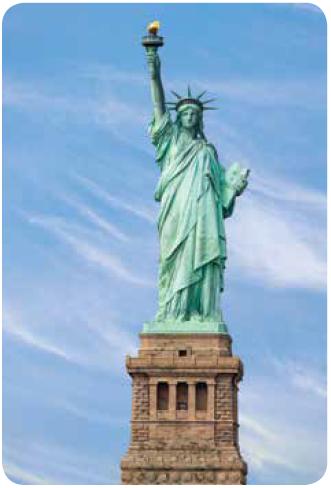
But there is more to do in New York than eat. Lots more! New York City is full of cultural attractions—concert halls, theaters and museums. In Manhattan, Broadway is famous for its theaters, where you can watch musicals and plays.
I especially liked the Metropolitan Museum of Art, which is also in Manhattan. There, you can see some of the most famous art Earthlings have ever made. Because she is so interested in plants and animals, Lieutenant Koola preferred the Museum of Natural History. She showed me the big skeletons of some extinct Earth animals called dinosaurs.
Both of these museums are located near a large space called Central Park. The park also has lakes, fields, a theater, a zoo, and other places for people to gather or play.
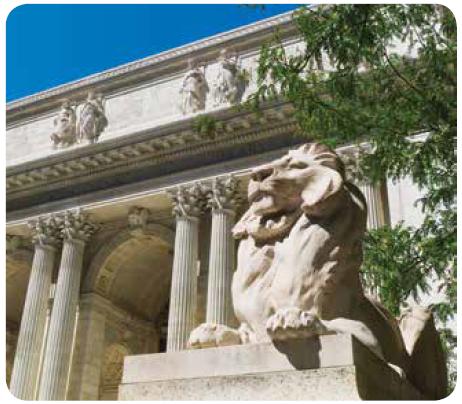
Of course, we also went to the library. We found the New York Public Library in an impressive building guarded by two stone lions. We spent some time there looking up facts about New York and the other states of the Mid-Atlantic region. We found out, for example, that the area has a climate pretty much like New England’s. However, the summers are hotter and the winters are not quite so cold.
We also learned that the states of New York, New Jersey, Pennsylvania, Delaware, and Maryland are among the most heavily populated states in the country. Their many large cities are centers of industry and government.
In fact, the headquarters of the national government is in a place called Washington, D.C., located in the southern part of the region. We decided to make Washington, D.C., our next stop.
Exploring the Capital
Washington, D.C., is the only American city that is not in a state. It is the capital of the entire country. That means it cannot be part of any one state because that state would hold too much power. So the city is its own district, or area: the District of Columbia. That is why Washington is referred to as Washington, D.C. Using D.C. also stops people from confusing Washington state with the city of Washington.
On the way to Washington, D.C., we flew over some of the other interesting cities in the area. In Pennsylvania, we flew over Philadelphia. In Maryland, we flew over Baltimore. We also flew over a body of water called Chesapeake Bay, which was covered with hundreds of small fishing boats. We had read that wonderful seafood comes from this bay. Chesapeake Bay is especially famous for its crabs, which are supposed to be sort of like lobsters, but smaller and rounder.
When we arrived in Washington, D.C., we noticed the city has wide, straight streets called avenues. There are a lot of grand buildings where the people who run the government work. Maybe the grandest building is the U.S. Capitol with its large white dome. This is where Congress makes America’s laws. Congress is made up of elected lawmakers from every state. To the west of the Capitol is a long grassy area called The National Mall. Usually, when Americans talk about a mall, they mean a shopping center full of stores. But The National Mall is definitely not a shopping center! Instead, it is a place where Americans gather for different kinds of celebrations.
Right in the middle of The National Mall is a huge stone obelisk more than five hundred feet tall. An obelisk is a four-sided shaft that narrows to a pyramid-like point. This one is called the Washington Monument. It was built in honor of America’s first president, George Washington. As you may recall, Admiral, the president is the head of the national government. At the far end of The National Mall is the Lincoln Memorial.
This structure honors another great American president, Abraham Lincoln. Lincoln was president during the 1860s. Inside the memorial is a very large statue of Lincoln, three or four times the size of a real human being. He is seated in a chair, and looks very serious and commanding.
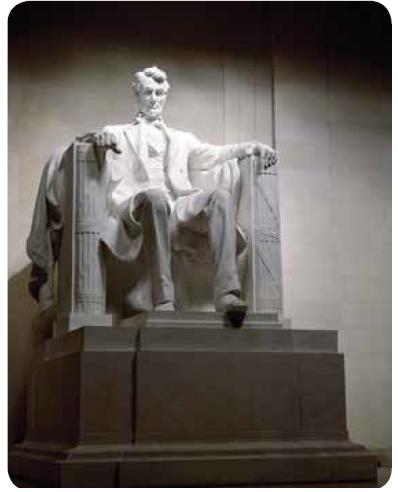
Near The National Mall is the house where today’s president lives. When we saw it, we thought he was lucky to live in the elegant white house with tall pillars in front of the door. Americans call the president’s home the White House.
When it was time for some studying, we went to the Library of Congress. This is the biggest library in the United States. There, we looked up facts about the next region: the South.
